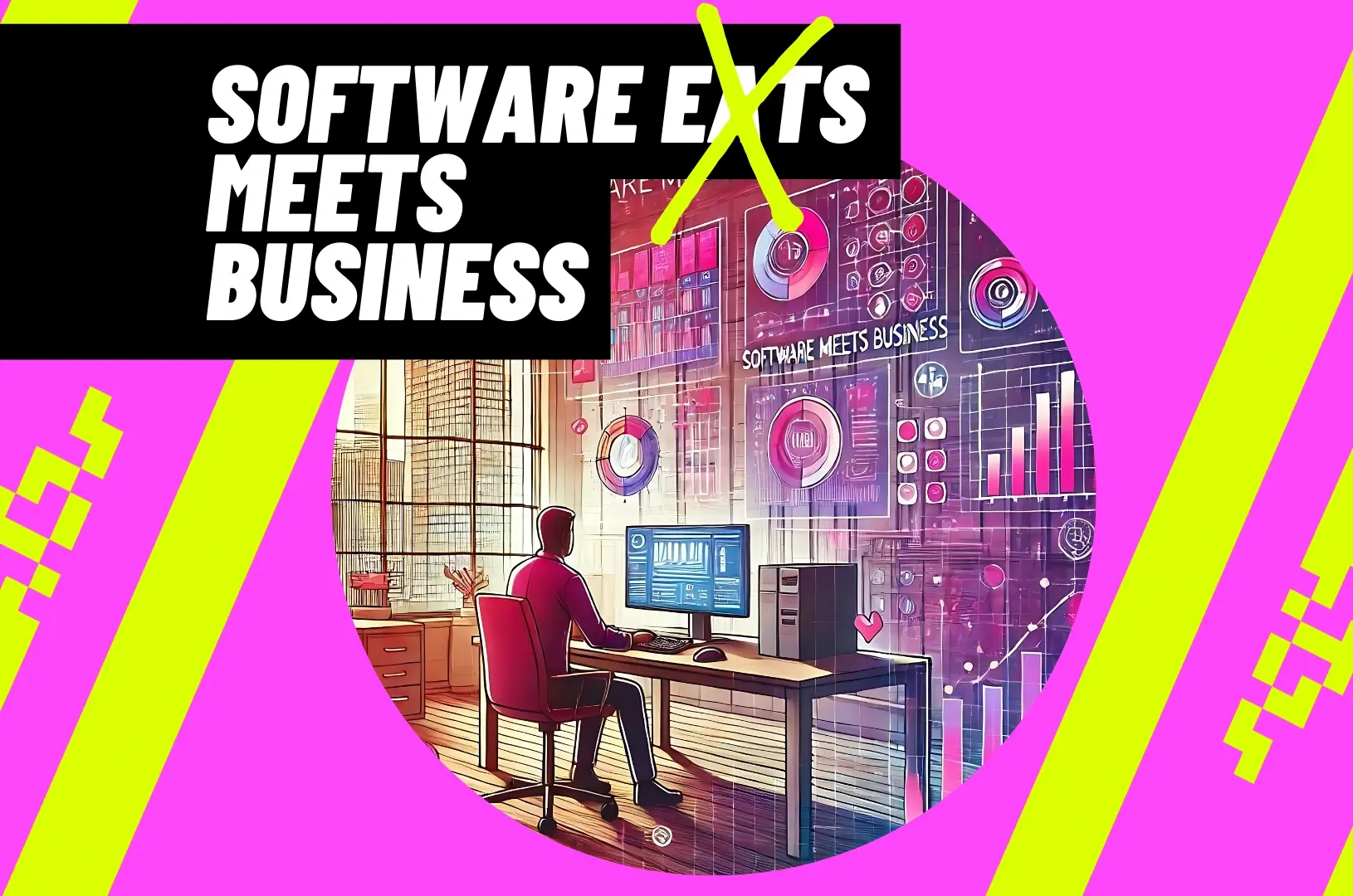
In-House vs Nearshore: Building Software Teams and Lessons Learned - E7
This episode discusses Mario Behrendt's journey from building in-house software teams to setting up an augmented team in Bulgaria.
In this exciting episode of Software Meets Business, host Richard Bundock sits down with Mario Behrendt to dive into the ourney from building in-house software teams to setting up an augmented team in Bulgaria, exploring the successes, challenges, and lessons learned along the way. The conversation also focuses on his previous work at tails.com, a company transforming the pet food industry with custom software solutions.
[00:00:11]
Rich: Hi, and welcome to another episode of Software Meets Business. Today’s episode is extra special because we’re recording face-to-face, which is a bit of a change! Joining me is Mario Baron, the Director of Engineering at Katkin. Hi, Mario!
Mario: Hey, thanks for having me!
Rich: Great to have you here. Let’s kick things off. Can you tell us a bit about your background, how you got into the industry, and what led you to this point?
[00:00:47]
Mario: Sure! I’ve been in software engineering for about 16–17 years. I started dabbling in web development at around 12 or 13 years old because I realised the website I wanted didn’t exist, so I built it myself. By the time I was an adult, I discovered you could actually get paid to do this, so I naturally became a software engineer. Over time, I moved into management roles—first as a lead, then a department head, and eventually director. Interestingly, most of my career has been in e-commerce. Apart from one role, I’ve been involved in e-commerce in some form, so I’ve doubled down on that specialisation.
[00:01:26]
Rich: That makes sense. E-commerce has evolved a lot over the years. Did you work more with SaaS platforms like Shopify or build custom systems?
Mario: It’s been a mix. Early on, I worked with traditional e-commerce setups, building and maintaining custom platforms or using self-hosted solutions like Magento. I even specialised in Magento for a while because it was huge in Europe back then. Later in my career, I transitioned into direct-to-consumer (D2C) businesses, building entirely custom platforms tailored to specific customer journeys.
[00:02:35]
Rich: You mentioned moving into management. Were you initially managing in-house teams, or did you work with external teams as well?
Mario: My first management roles were all about leading internal teams, mainly permanent employees and a few contractors. That was in Germany initially, and then when I moved to the UK, I continued managing in-house teams. It wasn’t until I joined Tails, one of Europe’s largest pet food companies, that I started working with nearshore and offshore teams.
[00:03:09]
Rich: So when you started bringing in external teams, what prompted that shift?
Mario: A mix of factors, really. At Tails, we needed to grow rapidly, and hiring locally in London was tough. This was pre-COVID, and our office was in Richmond, which wasn’t a convenient commute for most developers. We decided to explore nearshore options to access a larger talent pool, reduce costs, and speed up hiring. Our first attempt was with a partner company in Bulgaria.
[00:03:57]
Rich: How did you approach building that nearshore team in Bulgaria?
Mario: The company we worked with offered a “shell” model. They handled HR, payroll, and office space, but we were responsible for hiring the engineers. Essentially, the engineers worked for us full-time but were employed by the partner company. I flew to Sofia to visit their offices, meet their staff, and ensure they provided a good working environment for the engineers. It felt like setting up a satellite team that could operate as an extension of our in-house team.
[00:04:57]
Rich: What was the hiring process like for these engineers?
Mario: It was a slightly condensed version of our UK process. The partner company pre-screened candidates based on criteria we provided, saving us time on initial interviews. After that, we did our usual technical assessments and interviews. The challenge, though, was brand recognition. Nobody in Bulgaria had heard of Tails. We were competing against global companies like Uber and the Financial Times, who were also hiring there.
[00:06:03]
Rich: So how did that competition affect your efforts?
Mario: It was tough. Engineers in Bulgaria were more inclined to work for well-known brands like Uber, which offered strong salaries and prestige. We struggled to attract top talent because Tails wasn’t a household name there. We even flew back to Sofia to host meetups, hoping to generate interest. We talked about our exciting engineering challenges, brought UK engineers to speak at events, and offered free beer and pizza.
Rich: Did it work?
Mario: Not really. People attended the meetups, but they weren’t interested in joining us. They’d say, “Thanks for the beer, but I’ll stick with Uber or FT.” We wasted about six months and realised this approach wasn’t going to work.
[00:11:03]
Rich: What did you do next?
Mario: We pivoted. Instead of hiring individual engineers through a shell company, we explored nearshore agencies with established teams. I vetted around 30–40 companies across Europe—Spain, Portugal, Poland, Ukraine, and Belarus—looking for agencies with large talent pools. We eventually chose two companies with thousands of engineers already on staff. They provided pre-vetted candidates we could interview, which sped up the process and ensured higher quality.
[00:19:00]
Rich: How did the new approach work out?
Mario: Much better. For some projects, we brought in entire nearshore squads—engineers, QA, PMs—who worked almost independently with oversight from one of our engineering leads. For other teams, we augmented our existing UK teams with one to three nearshore engineers. The key was treating everyone like full members of the team, regardless of location.
[00:20:30]
Rich: Did you face challenges integrating nearshore engineers with your in-house team?
Mario: There were some hurdles, especially pre-COVID when our in-house team was entirely office-based. We had to adapt to a hybrid model and invest more in communication tools and processes. The success depended on the type of project. Augmentation worked well for longer-term needs, but distinct projects—like launching a new product—were ideal for nearshore teams.
[00:22:30]
Rich: Did you see much turnover with the nearshore engineers?
Mario: Hardly any. We treated them like part of the team, gave them meaningful work, and kept the bar high. They appreciated the culture and stayed longer. The only person who left was promoted by their agency, but we ended up hiring them back in a new role later.
[00:25:00]
Rich: What advice would you give to someone starting this journey?
Mario: Vet the nearshore companies thoroughly. The first meeting will be all sales talk, but dig deeper in follow-ups. Ask to interview their engineers before signing anything. Also, be clear about your needs. For example, nearshore is great for short-term projects or finding product-market fit. But for core business functions, you’ll likely want in-house talent.
[00:28:00]
Rich: And now you’re at Katkin. How’s that going?
Mario: It’s going really well! Right now, we have a purely in-house team and are hiring. That said, I’m open to nearshore for distinct projects, like building a mobile app or exploring new tech. For core business operations, I still prefer in-house engineers because they understand the domain and customer needs better.
[00:30:00]
Rich: Where do you think the industry is heading?
Mario: AI is advancing fast, but it’s not replacing engineers anytime soon. It’s great for generating code quickly but struggles with complex, domain-specific tasks. That said, the landscape could look very different in a few years.
[00:32:10]
Rich: Mario, thank you so much for sharing your journey and insights!
Mario: Thank you for having me! It’s been a pleasure.

Contact us.
If you need a partner in software development, we're here to help you.
We will respond to your enquiry immediately.